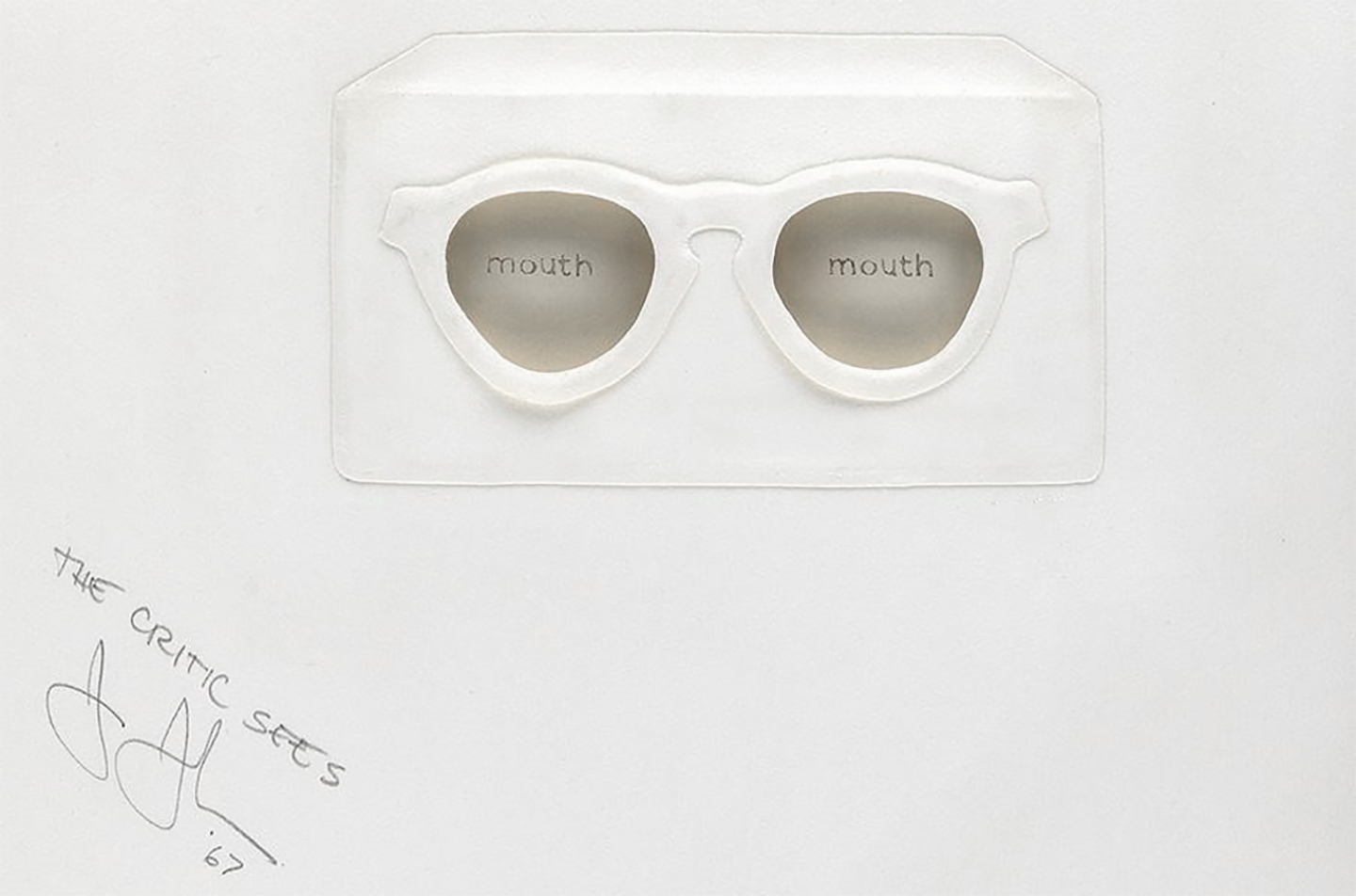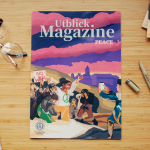Text by Marine Khachatryan, originally published on Enlight on September 12, 2019
“Enlight” Research Center will soon publish the translation of Max Weber’s German book “Science as a Vocation and Calling” which, in addition to the rare opportunity to get acquainted with the author’s thoughts in Armenian, it can be considered as an invitation to think about the line offered by one’s own profession in the scientific circles of Armenia. However, the maintenance of the word vocation from the book in the title of this article and the abbreviation of the word calling are not coincidence. This editing was done with the view that the vocation is really optional, the calling may be something to be given or to be realized due to time and experience or luck.
In a recent meeting-discussion with the curators, the following view was voiced that the best meanings in the field of art are born by the curators, they are the pioneers of innovative meanings [1]. This announcement could have been simply made also by the artists. Could such an ambitious statement be made by critics? Taking into account the fact that meetings with artists and curators occur quite frequently, which raise issues related to the field, while the last conference of art critics [2] took place ten years ago, in 2009,and the conversations on their problems are less frequent in general, it is worth discussing the last issue briefly, at the same time trying to understand the position and the role of art critics.
In the field of art, meaning is an apple of discord, the “production” of which is diligently pursued by three specialists at once: the artist, the curator and the critic [3]. This three-party alliance gives and takes until a “product” of meaning is created, consisting of works of art, exhibitions and texts, the ownership of which belongs to everyone at the same time. The reason for this confusion is that each of the workers builds his/her own work on the meanings generated by the others, often reaping the fruits of his/her partner’s work.
For justice it should be mentioned that the meaning is first embodied in the artist’s head, so he/she must first be given its inalienable parental right. But often the opposite happens? The idea of the exhibition is born in the curator’s mind, after which the artists are engaged in the process of its “objectification” (although the work is not always in the form of an object). In this case, it is not the curator who mediates between the artist’s idea and the viewer, but the artist is the mediator, the implementer of the curator’s idea. However, the thought that arises in the curator’s mind is in hanging the air without the artist’s road map: but in this case the curator’s idea is the primary precursor of meaning. Therefore, these actors change places from time to time. The primary “laboratory” of meaning sometimes belongs to the artist, sometimes to the curator.
After being created in the artist’s studio the work with its meanings makes its way to the curator. It is often said that the work comes out of the studio “naked”, as if “defenseless”, incomplete and it needs to be put in a framework with the help of the curator’s light hand and to be accomplished. That is why the work of art is not sent directly to the exhibition halls (though such things happen as well), but comes directly to the curator, relying on his/her vital intervention. The latter examines the work thoroughly, adds new meanings and sends to the exhibition hall: in front of the public. The first contact with the work and the viewer happens after the curator’s organizational interventions. This “agent”, who organizes the proper and presentable meeting between the viewer and the work, puts the works in a broader socio-political and cultural-aesthetic context.
Only after the opening of the exhibition it is the critics’ turn to examine (if we put aside the fact that depending on their connections and friendly relations or the opportunities provided by the Internet a lot of critics get acquainted with some works before their appearing in the exhibition hall). At this stage the critic does double work – he examines the works of artists’ and curators’ at the same time as separate and linked compositions. However, in fact, he gets a ready”product” – that’s why the critic is threatened by rather serious accusations of being out of the race of producing a meaning. It is supposed that he/she is not the pioneer of ideas. He/she is someone waiting for thought-provokers, who, roughly speaking, is incapable of thinking about art without the thoughtful stimulations promoted by the first two figures, an evidence of intellectual ignorance and inability for many. Ernesto Sabato describes the critics in his novel ”The Tunnel” like this, ”What would you think about the person who has never held a lancet in his hand, has not even tied a cat paw and suddenly he reproves the surgeon for not doing a good operation. The same also happens in painting”.
Then what is the role of the critic in the relation of that ready work. First, the critic is a mediator between the viewer and the exhibition case, an explainer, an interpreter. Second, he/she is a creator of new meanings. Third, he/she is a ”judge’, an estimator, giving the things their names.
Indeed, the exhibition visitor needs an explanation. The critic is the supporter for the viewer, the one, who makes it possible for him/her to understand somehow. The critic, however, shares the explanatory work with both the artist and the curator. After the exhibitions the conversations or discussions with the artists or curators, the speeches and even the exhibition texts provided by the curators fill in the permanent gap of this explanation. Therefore the critic’s text adds one more brick to these efforts of the explanation, however, it is not a remarkable commitment as the viewer can ”get well with” even without that text and probably can reach the desired comprehension of the exhibition and works.
On the road of searching the interpretation and explanations the critic places the art work and the exhibition in a new field of meaning . The travail of the art work does not end after the artist’s work creation and the curator’s exhibiting act. It continues in the process of the criticism. As the critics, who touch upon the work or the exhibition, can be numerous in different periods and places (as said in Susan Sontag’s words, ”they are glued to the art works like a leech”). So we can say that the work is constantly in the process of being developed, ”the ready product” is constantly at the preparing stage. The choice of the framework of the explanation by the interpreters conditions the viewpoint of the comprehension of the works.
As the critic is ”thirded’, he/she forms the third circle of the artist-curator-critic chain, mainly he/she got the job of evaluating. In ideal cases, he/she is separate from the creation of the work, from organizing the exhibition and he/she can give a fair evaluation to what has been done or displayed. [4] Mostly neither the curator, nor the artist can be fair in evaluating their own work (though their evaluations are also valuable), while the critic observes the work not made by himself/herself from another side, from outside, from the ”right” distance. It is only in the evaluation that the critic’s authority is monopolistic(in the mission of interpretation and meaning creation he is not alone), although that evaluations are strictly fallible given to the trial of time.
Robin Collingwood in the book called ”The principles of Art” writes that the job of the critic is ”to define a consistent application of concepts, to decide the nomination of different things that compete for the given name saying that ”this is art, this is not”. The person having the qualification of doing such work is called a judge and to judge means to make a decision”. And in the book ”The trajectory of history” Albert Stepanyan compares the work of researchers, especially the work of historians’ ”with the work of the pedigree judge whose obligation was to view comprehensively and examine the arguments of the applicant and respondent sides, then come to a verdict which is fair and acceptable not only for both sides, but also for the whole community”. If the historian’s problem is the amputation of the past with comprehensive examination for the purpose of producing an adjusted text, then the mission of the art critic is ”the X-ray diagnosis” of the exhibition and artworks and the articulation of the text with the seal of their own conclusions while listening to the interpretations of the artists and curators about their own work.
Hence, can we conclude that the criticism which is free of evaluations and only explains, comments and on that road sets new meanings, in fact, is barren, as it does not perform the function which is reserved only to him/her. The problem remains unsolved. Let’s only mention the fact that the contemporary art gives the questions ”is this art?, what is art?” and answering to that questions itself it deprives the critic of judicial commitment and of making the inviolable decision of being art or not art by inducing him/her to find other functions for himself/herself (which, probably, are providing alternatives for the explanation).
References
[1] It is about a statement made during the meeting with the curators on June 20.
[2] Two-day international conference of art critics in Armenia, organized under the auspices of the Ministry of Culture and initiated by the International Association of Art Critics.
[3] This is in the case when the same person does not act as an artist, curator or critic at the same time, which is also a possible phenomenon. This article builds its arguments on the premise that these three professionals are separate individuals.
[4] We can remember, for example, the art critic Clement Greenberg, who actively participated in the process of creating works of art by directing, giving advices and even giving instructions, but in the text it is about the opposite.
Author: Marine Khachatryan © All rights reserved.
Translator: Mariam Badalyan





